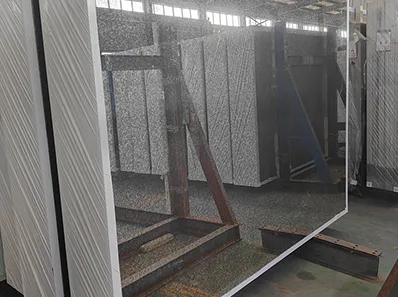Nov . 14, 2024 11:26 Back to list
reflective tempered glass
Reflective Tempered Glass A Modern Architectural Marvel
In the world of modern architecture and design, materials play a pivotal role in shaping not only the aesthetics of a building but also its functionality and sustainability. One material that has gained immense popularity in recent years is reflective tempered glass. This innovative material combines strength, safety, and striking visual appeal, making it a favored choice for architects and builders alike.
Understanding Reflective Tempered Glass
Reflective tempered glass is a type of safety glass that has undergone a special heat treatment process, making it significantly stronger than standard glass. The tempering process involves heating the glass to high temperatures and then rapidly cooling it. This technique increases its tensile strength, making it more resilient to impact and thermal stress. Furthermore, the reflective coating applied to one side of the glass allows it to reflect a significant portion of solar energy, enhancing energy efficiency while reducing glare.
The reflective qualities of this glass not only contribute to energy conservation but also offer visual benefits. By reflecting exterior light and the surrounding environment, reflective tempered glass creates a stunning façade that can change appearance throughout the day, depending on the angle of the sun and the surrounding light conditions. This dynamic quality is particularly appealing in urban settings, where buildings composed of this glass can create a mesmerizing play of light and shadow.
Applications in Architecture
The versatility of reflective tempered glass makes it suitable for various applications in architecture
. It is commonly used in commercial buildings, skyscrapers, and office complexes where aesthetics and functionality are paramount. The glass can be employed in windows, curtain walls, and facades, allowing for expansive views while maintaining privacy. Its ability to minimize heat absorption means that buildings can maintain more consistent interior temperatures, reducing the reliance on air conditioning systems and promoting sustainability.Moreover, reflective tempered glass is increasingly used in residential architecture. Homeowners are drawn to its modern look and the way it can harmonize with different architectural styles. Whether in sleek urban lofts or contemporary suburban homes, this glass provides a luxurious appearance while offering practical benefits, such as enhanced natural light and energy efficiency.
reflective tempered glass

Safety and Sustainability Benefits
One of the most significant advantages of reflective tempered glass is its safety features. In the event of breakage, tempered glass shatters into small, blunt pieces that reduce the risk of injury, a crucial consideration in densely populated areas. Additionally, many manufacturers are focusing on producing reflective tempered glass with eco-friendly coatings and materials, further enhancing its sustainable profile.
The energy efficiency of reflective tempered glass can also contribute to LEED (Leadership in Energy and Environmental Design) certifications for buildings, recognizing the environmental performance of a structure. By reducing the amount of energy needed for heating and cooling, reflective tempered glass helps lower carbon footprints and energy costs, making it an ideal choice for environmentally-conscious building projects.
Challenges and Considerations
Despite its numerous benefits, reflective tempered glass is not without challenges. One consideration is its tendency to create a mirrored effect, which can lead to unintended reflections and glare. This can impact neighboring properties or pedestrians, necessitating careful planning and consideration of the placement of glass elements during the design process. Additionally, the initial cost of reflective tempered glass can be higher than standard glass, although the long-term energy savings and durability often offset this investment.
Conclusion
Reflective tempered glass stands as a testament to modern architectural innovation, marrying beauty with functionality and safety. As architects continue to push the boundaries of design, this remarkable material will undoubtedly play a crucial role in shaping the environments we inhabit, blending seamlessly into the urban landscape while promoting sustainability. Its unique properties and aesthetic appeal make reflective tempered glass a cornerstone in the evolution of contemporary architecture, allowing for buildings that are not just structures, but works of art.
-
Safety and Style with Premium Laminated Glass Solutions
NewsJun.24,2025
-
Reinvents Security with Premium Wired Glass
NewsJun.24,2025
-
Premium Float Glass Line for Modern Architecture
NewsJun.24,2025
-
Low Emissivity Glass for Energy-Efficient Architecture
NewsJun.24,2025
-
High-Performance Insulated Glass Solutions for Modern Architecture
NewsJun.24,2025
-
Elevates Interior Style with Premium Silver Mirror
NewsJun.24,2025
Related PRODUCTS














